If you want one plant you can grow that is guaranteed to attract songbirds, bees, butterflies and hummingbirds but also requires little fuss, try anise hyssop.
I’ve written about this native perennial herb many times. I accidentally sprouted some plants from seed almost 20 years go when I received a mislabeled seed packet, and I’ve been growing these plants ever since.
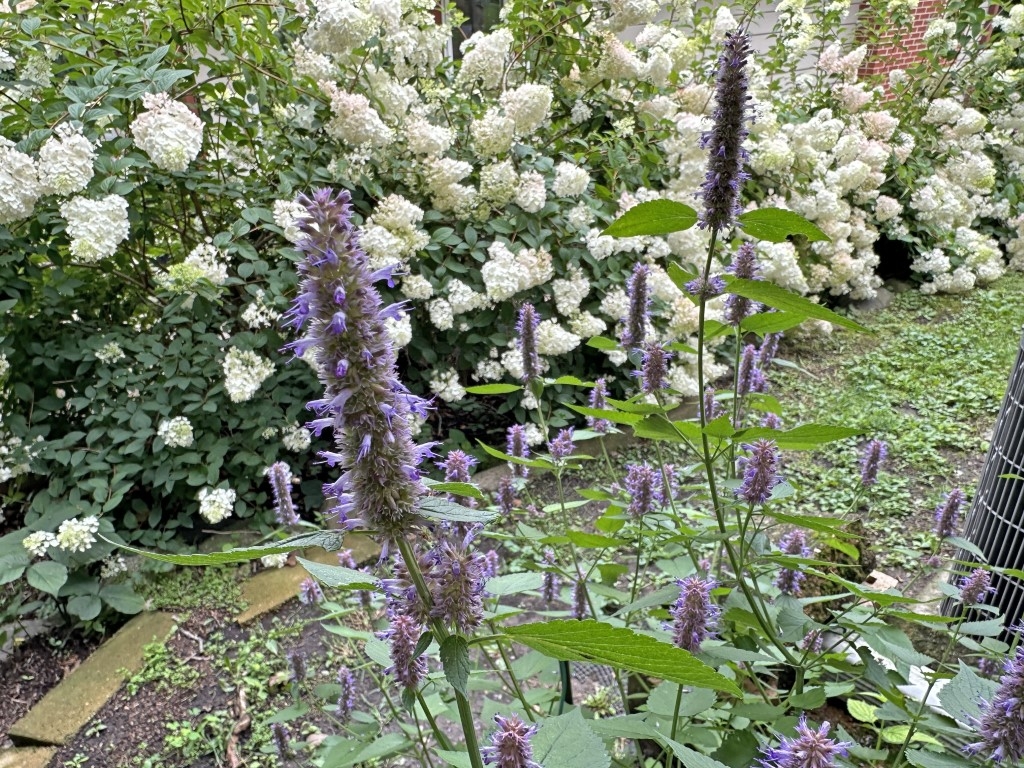
Anise hyssop is a bumblebee favorite. Honeybees and many other pollinators also visit the flowers.

I’ve seen hummingbirds sipping nectar from the little purple spikes, but until this year I didn’t realize that songbirds like goldfinches also visit the flowers to pick out the tiny, black seeds. This goldfinch was right outside my window the other day.
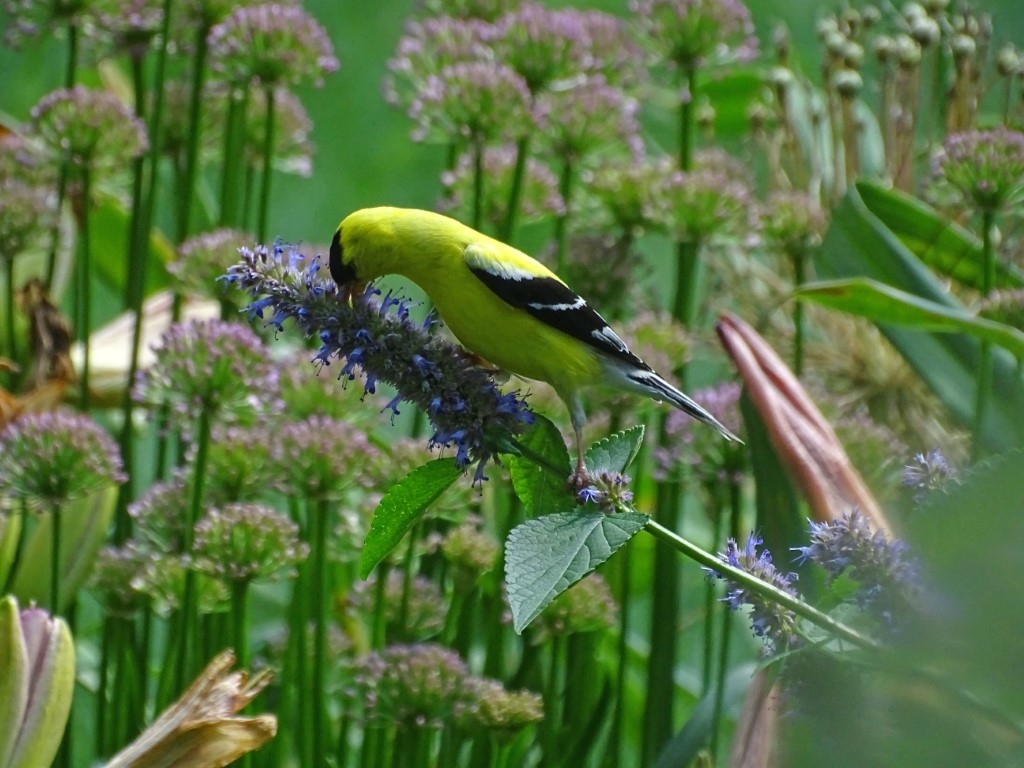
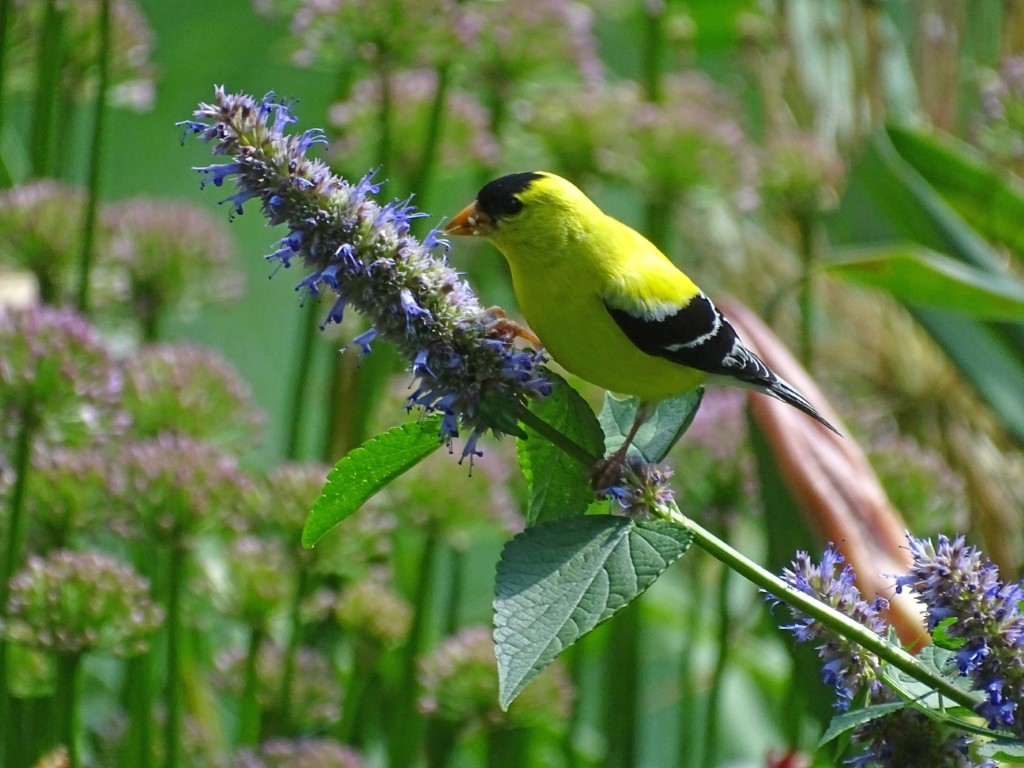
As I’ve written about previously, anise hyssop will self-seed, but not in an annoying way. I usually use any seedlings that come up in the spring to fill in bare spots caused when another perennial doesn’t survive winter or a hungry rabbit makes a salad bar of my annual flowers.
This spring when I wanted to redo a flowerbed and focus on native plants for pollinators, anise hyssop was the first plant I thought of. It does well in wet or dry conditions, rabbits don’t touch it, and I also love that it will grow and bloom happily in part-shade as well as full sun.
Last year three volunteer plants popped up in the landscape stones in front of my home office window and I let them grow. This year they went a little crazy (probably because of the abundant rain). Usually these plants top out at 2 or 3 feet, but these clumps are pushing 5 feet tall.
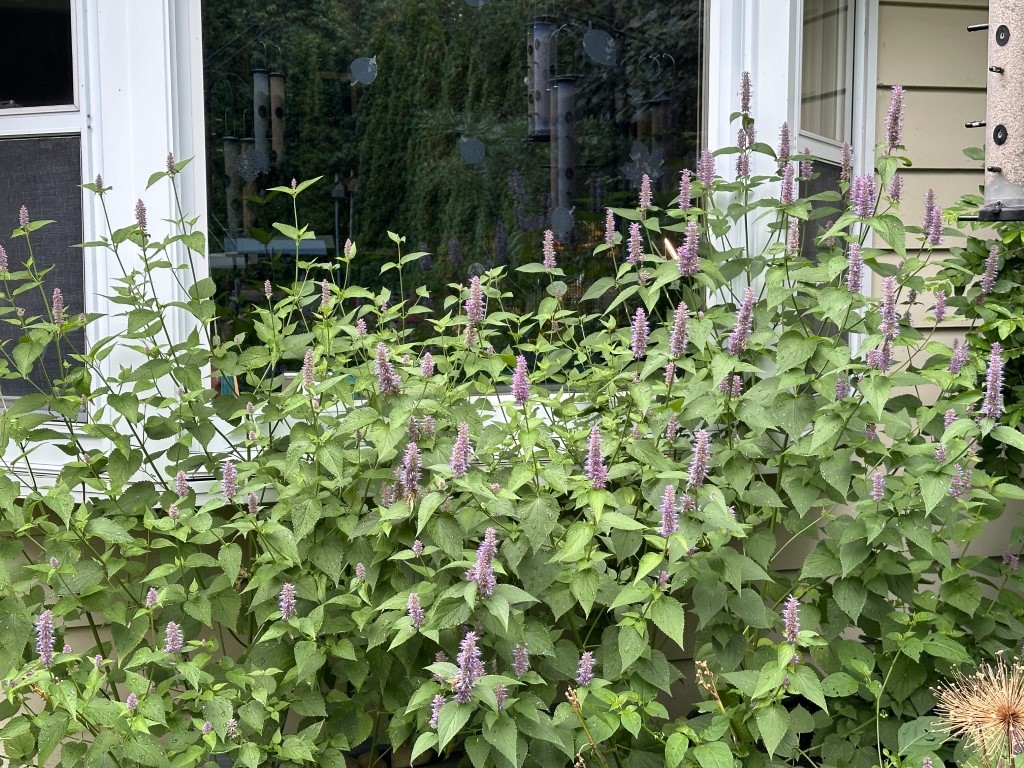
I decided to let them flourish there so I could watch the busy bees working just inches from the window. A few weeks ago we didn’t have any bees which was quite alarming. Thankfully the numbers are increasing though still not where they should be for a normal summer.
I sprout my anise hyssop seeds indoors about 8 weeks before our last frost date, but these plants can also be direct-sown in the garden. You can find seeds for sale online, and for the last several years I’ve also seen plants for sale at garden centers—probably because native plants are all the rage.
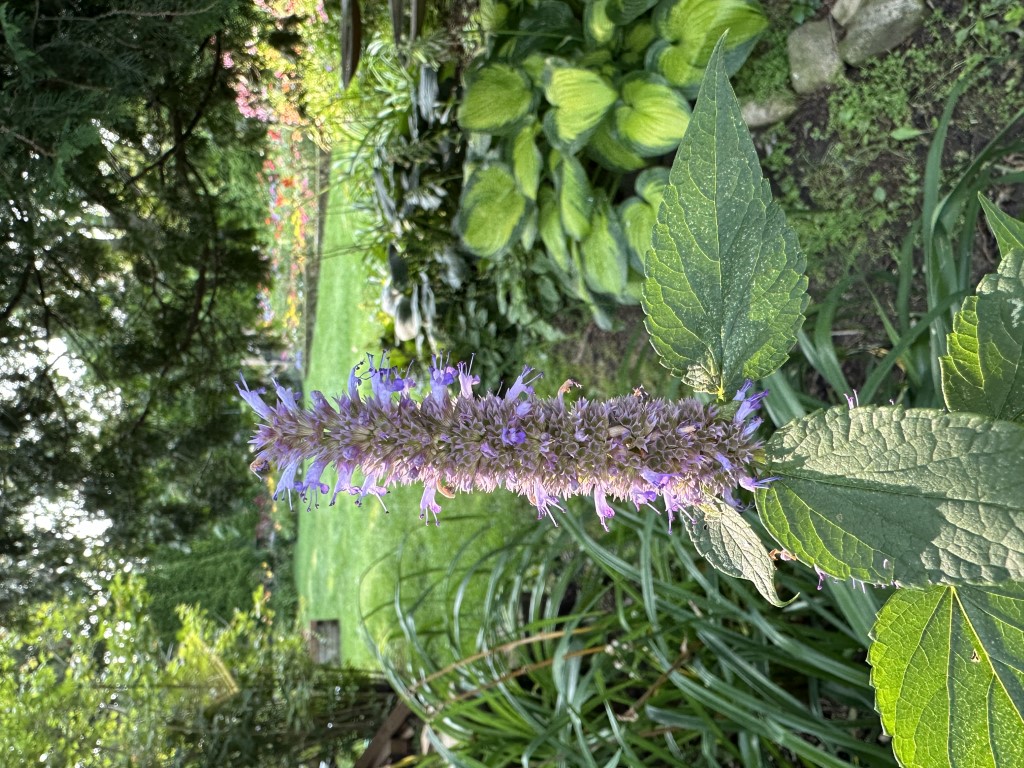
Anise Hyssop is also a medicinal herb. The leaves smell like licorice which is why this plant is also called licorice mint. The plants are hardy in Zones 4-8.
